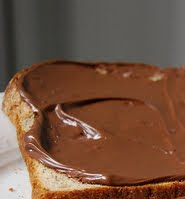The many faces of Quinoa
With the end of classes coming around and procrastination from papers increasing with the end of the semester, I'm hoping to be posting more frequently from now on (along the lines of twice a week).
It seems like people are looking for all sorts of substitutes recently (myself included!) whether it is to make something vegan, gluten-free, low-fat, low-sugar, low calorie, the list goes on… this is why this week’s ode is to quinoa.
Quinoa: it’s something of a grain, but it’s gluten free and you can use it for ANYTHING! It can substitute rice, couscous, breakfast oatmeal, you can find quinoa flour, you name it!
Like I mentioned in one of my last posts, I always find it fascinating (but mostly scary) how far removed we have become from our food. When we consider that traditional South American diets understood the need for complete proteins, or that traditional Chinese cooking emphasizes the consumption of ‘internal body cleansers’ or 'energy balancers' like ginger or five spice powder, or even the entire concept of Indian Ayuverda, I wonder why we created our own unhealthiness by moving away from traditional knowledge to sipping Starbucks lattes and scarfing down bagged chips! I certainly don’t get it… Honestly, there’s a reason people didn’t have a billion allergies back then.
My rant aside, quinoa is another one of those foods that has been in use in South America for thousands of years and was apparently a sacred crop to the Incan. The upside of quinoa? It’s a complete protein on its own! Now fitting under the catchy category of ‘super foods’ it has all 8 essential amino acids... how much more nutritionally simple does it get?
On top of that, quinoa has a whole slew of vitamins and minerals: manganese, iron, magnesium, iron, copper, riboflavin (aka. Vitamin B2) and phosphorus. Because of the magnesium it’s wonderful for people prone to migraines, and has been proven to reduce hypertension and the risk of cardiovascular diseases and type 2 diabetes. It also has really high levels of fiber, calcium and iron.
If you’re eating it whole (so in its more rice/couscous form), there are many different types of quinoa, red, gold, etc. Though the ‘yellow’ coloured kind is the most common and is really tasty, my favourite by far is the Incan red.
Also, my partner and my little quinoa secret is that it tastes surprisingly like peanut butter when used in its flour form. So if you have a peanut allergy, use it in your basic chocolate chip recipe, and they’ll come out more peanut buttery. Or just use it with a peanut butter recipe and give it an extra kick!
As always, here are two more original ways of using quinoa. Both these recipes are from Heidi Swanson's blog, 101cookbooks: Delicious Big Bowl and Warm and Nutty Cinnamon Quinoa Recipe.
And stay tuned for my own quinoa recipe, coming up next!



Comments
Post a Comment